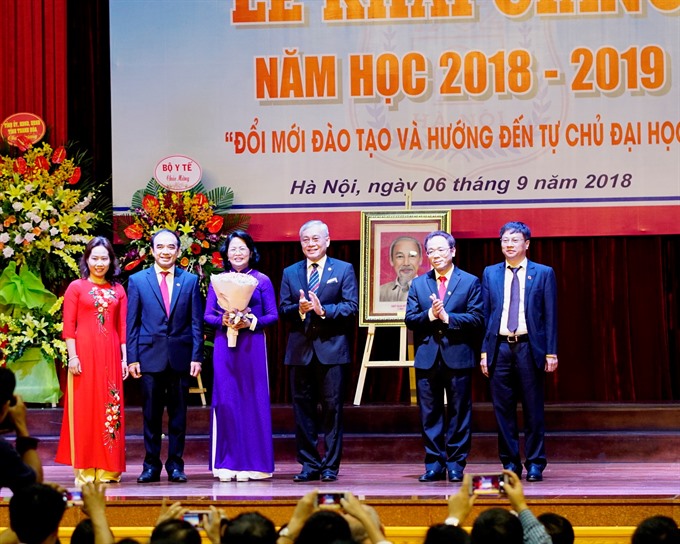

More than 3,600 students, including 1152 first-years, of the Hà Nội Medical University, the oldest education facility in Việt Nam, begins new academic year on September 6.
 |
| Vice President Đặng Thị Ngọc Thịnh (third from left) hands over gifts to leaders of the Hà Nội Medical University at a ceremony to begin new academic year 2018-19. — VNS Photo Thanh Hải |
HÀ NỘI — More than 3,600 students, including 1152 first-years, of the Hà Nội Medical University, the oldest education facility in Việt Nam, began the new academic year on Thursday.
Speaking at a ceremony to begin the new school year of the 116-year-old school, Vice President Đặng Thị Ngọc Thịnh urged the Hà Nội Medical University to improve university training and management quality to maintain its leading position in medical education in Việt Nam.
“Quality of training and transparent management would be core competitive elements to affirm reputation and to maintain long-term development for Hà Nội Medical University in the new age, towards reform education and university autonomy,” said Thịnh.
Thịnh also suggested the school continuously renew management and develop effective training policies to improve teacher training quality and speed up scientific research and international co-operation.
The university’s rector Nguyễn Đức Hinh said that the school would focus on improving training methods and management mechanisms towards gaining autonomy.
Hinh said that more efforts will be put into implementing three main tasks, namely training medical human resource, scientific research and providing medical services.
Established in 1902, the Hà Nội Medical University has trained many skilled doctors and health workers, serving the country’s two resistance wars and providing health care for its people. — VNS